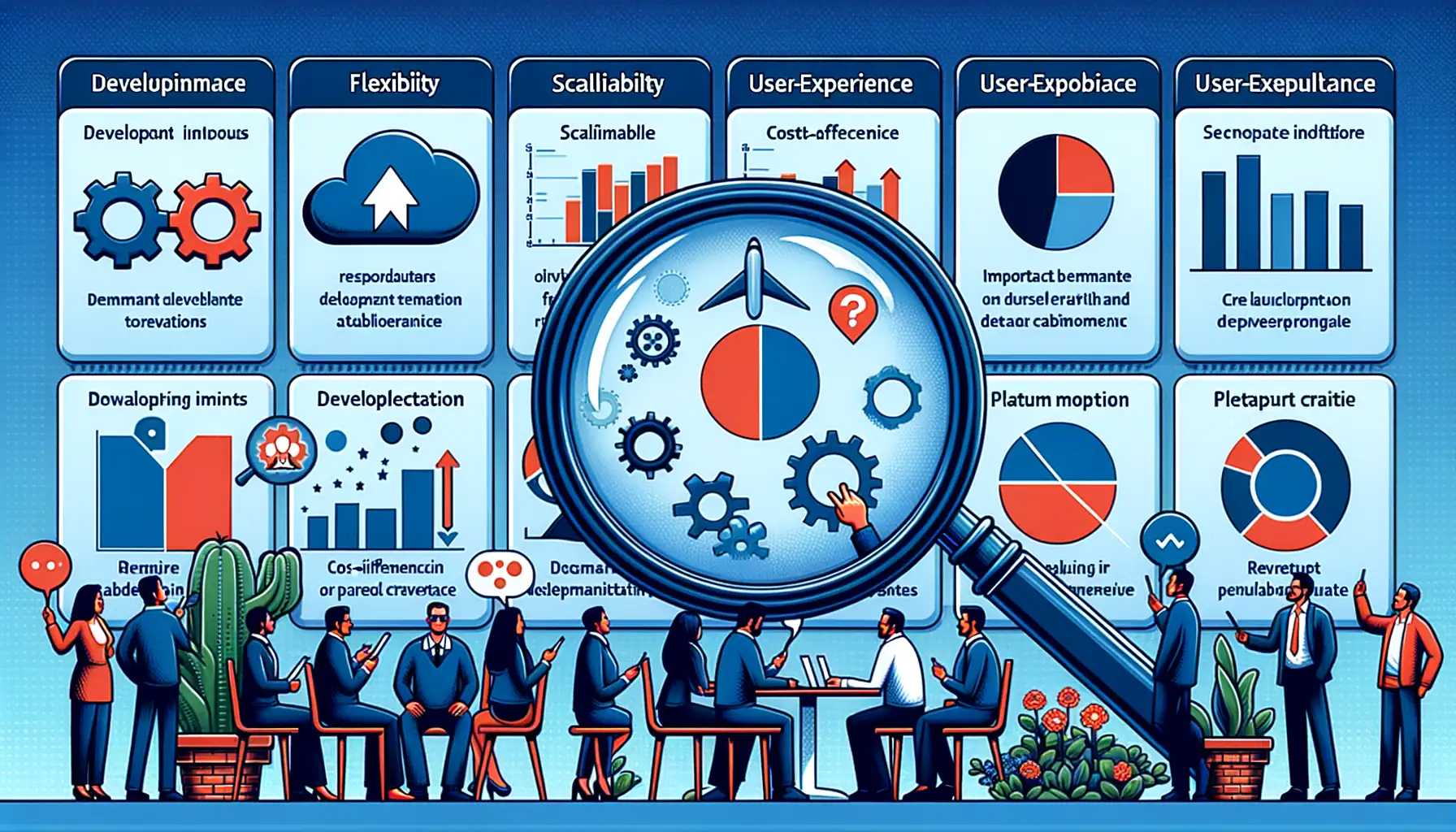What Are Low-Code Platforms?
Why Are Low-Code Platforms a Game-Changer?
Imagine building an app the same way you’d piece together LEGO bricks—intuitive, fast, and endlessly creative. That’s precisely what low-code platforms bring to the table. These platforms empower businesses and individuals to create applications without writing endless lines of code. In short? They simplify app development, bridging the gap between tech-savvy developers and those who cringe at the sight of a semicolon.
Here’s the magic: instead of diving headfirst into complex programming languages, low-code platforms offer intuitive drag-and-drop interfaces, prebuilt templates, and automation tools. The result? Apps that are created in days, not months.
- Faster Development: Say goodbye to exhausting coding marathons.
- Cost-Effectiveness: No need to hire a battalion of developers.
- Flexibility: Ideal for businesses big or small, from startups crafting prototypes to enterprises scaling operations.
Let’s say you’re an entrepreneur with a brilliant idea but can’t code your way out of a paper bag—low-code platforms let you turn concepts into reality. They empower dreamers and doers alike by making app-building accessible, no technical degree required!
Criteria for Choosing Low-Code Platforms

What Truly Matters When Picking a Low-Code Platform?
Choosing the right low-code platform can feel like picking a life partner for your app development dreams. It’s not just about shiny features—it’s about finding that perfect mix of functionality, ease, and long-term compatibility. To help you swipe right wisely, let’s dive into the key aspects:
- User-Friendliness: Is the interface intuitive enough for someone who isn’t a coding wizard? Your time is precious—you shouldn’t need a user manual thicker than a novel.
- Integration Power: Can the platform play nice with your existing tools, data systems, and APIs? A good match fits seamlessly into your workflow, not fights against it.
- Scalability: Think long-term. Will this tool support your growing ambitions, or crumble under pressure when your app goes viral?
Hidden Gems to Look For
Beyond the obvious, keep an eye out for hidden treasures like:
– **Customizable Templates**: Starting from scratch is overrated. A library of ready-to-use templates can save countless hours.
– **Collaboration Features**: Whether it’s real-time editing or team dashboards, the right platform turns your solo project into a team masterpiece.
– **Transparent Pricing**: The last thing you want is to fall in love with a platform, only to discover a surprise pricing trap later.
Let your instincts, and these criteria, guide your choice—you’ll thank yourself later!
Top 5 Low-Code Platforms for 2024

Standout Players in the Low-Code Arena
Ready to revolutionize how you build apps in 2024? With so many low-code platforms out there, it’s easy to feel like a kid in a candy store—overwhelmed by options! Let me walk you through the top 5 platforms that are making big waves this year. These tools don’t just help you build apps; they help you transform ideas into businesses faster than you can say “drag-and-drop.”
- OutSystems: Think of this as the Swiss Army knife of low-code platforms. With enterprise-grade features and unmatched scalability, it’s your go-to for ambitious projects.
- Mendix: Perfect for collaboration-driven teams. It’s packed with features that feel like they were designed with teamwork in mind.
- Microsoft Power Apps: Already using other Microsoft products? Seamless integration and a beginner-friendly interface make this platform a no-brainer.
- Airtable: Calling all creatives! This platform blends databases with design, giving you full control over customization.
- : The dark horse of low-code development. Its intuitive setup will have you saying, “Wait, why haven’t I used this before?”
Each has its quirks and crown jewels, but one thing’s for sure: these platforms are redefining innovation—and fast!
Why These Platforms Shine
What sets these apart? It’s their ability to make app-building approachable while keeping power under the hood. Imagine crafting a fully functional app without writing endless lines of code. That’s the real magic. For beginners, platforms like Power Apps guide you every step of the way. On the flip side, if you’re a tech wizard, tools like OutSystems and Mendix allow deep customizations that feel limitless.
Plus, let’s talk adaptability. Whether you’re launching a startup or optimizing enterprise-level operations, these platforms adapt like chameleons. Want workflow automation? Done. Need complex app integrations? Easy-peasy. In short, they’re not just tools—they’re your co-creators in the digital age.
Comparison and Features of Leading Platforms

Standout Features That Set These Platforms Apart
When it comes to choosing a low-code platform, the devil’s in the details—and every platform has its unique personality. Let’s peel back the layers and see what makes each one tick.
Some platforms like Mendix are a dream for collaboration. Imagine this: your developers, business users, and even the odd sales rep all working seamlessly on one canvas, turning complex ideas into polished apps. Then there’s OutSystems, where their AI-assisted development feels like having an extra set of genius hands building alongside you. It doesn’t just speed up the process—it supercharges it.
Now take a look at Microsoft Power Apps. For businesses already married to the Microsoft ecosystem, this feels less like adopting something new and more like welcoming home a long-lost cousin. Everything connects effortlessly—think data flows from Excel, Teams, or Dynamics 365 in just clicks.
Feeling adventurous? Appian shines with real-time process automation that makes manual workflows look like ancient history. And don’t overlook Zoho Creator: it’s the scrappy underdog with unmatched simplicity, perfect for those who want functionality without a steep learning curve.
- Mendix: A hub for collaboration and visual modeling.
- OutSystems: AI-driven efficiency at lightning speed.
- Power Apps: Seamless integration with Microsoft staples.
- Appian: Automation with a flair for elegance.
- Zoho Creator: Effortless building for everyday innovators.
Digging Into Performance and Flexibility
As you compare, think of these platforms like tools in a Swiss Army knife. Some excel at specific tasks, while others aim to be your all-in-one solution.
For instance, OutSystems boasts jaw-dropping scalability. Picture a company scaling from a single app prototype to robust enterprise-level solutions without breaking a sweat. Meanwhile, Zoho Creator is nimble—ideal for small-to-medium businesses needing fast results.
Ever heard of low-code meeting no-code halfway? Mendix does this beautifully, making it user-friendly enough for newbies yet powerful for seasoned DevOps teams. Similarly, Appian goes beyond building apps—it bridges processes across departments so seamlessly, you’ll wonder how you ever worked without it.
And did I mention Power Apps’s flexibility? Whether you’re creating apps on your laptop during coffee breaks or tweaking them on your phone during a commute, it gives you freedom without limits.
Conclusion and Expert Recommendations

Unlock Your App-Building Potential
And there you have it—our handpicked, powerhouse lineup of the Top 5 Low-Code Platforms for 2024. As we stand on the brink of ever-evolving tech, choosing the right platform can feel like picking the perfect tool from a glittering treasure chest. And let’s face it, not every gem will fit your crown.
To steer you toward success, consider:
- Are you aiming for rapid prototyping or enterprise-scale solutions?
- Do you prioritize seamless integrations or user-friendly interfaces?
- Will your team embrace visual workflows or need extensive backend scripting options?
Platforms like OutSystems are lifesavers for complex projects that demand scalability, while Bubble might be your dream match if you crave design freedom without a single line of code.
The Expert Tip You Can’t Ignore
Our advice? Don’t just read. Test-drive. Most platforms offer free trials or demo versions, so you can roll up your sleeves and experience their quirks upfront. The devil—and the delight—is in the details. From the drag-and-drop simplicity of Mendix to the no-fuss integrations of Power Apps, playing around is the shortest road to clarity.
Ultimately, the best choice isn’t just about features—it’s about what fits your goals like a glove.



